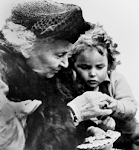Melamine resin, a hard thermosetting polymer made from melamine and formaldehyde, is widely used in the US in the form of kitchenware, including plates, bowls, mugs and utensils. Reports in the literature indicate that some kitchenware based on melamine resin leach considerable amounts of melamine monomer. A migration of up to 2.5 mg melamine/ 100 cm2 was observed under conditions that simulate an exposure to hot acidic foods…My husband and I take such care in providing our kids with the most wholesome foods we can afford, so I'm just not comfortable with melamine resin or formaldehyde leaching into their foods. So...I cleaned out the cupboards and did some online searching. I found a gorgeous children's enamelware set at Nova Natural. You'll probably remember enamel bowls and plates if you went camping as a child. Enamelware is very durable, but can chip if dropped. Santa was kind enough to get a set (plate, bowl, mug) for each of the kids this year! Believe it or not, I think the children were most excited about their mugs than any other gift. We enjoyed some hot cocoa in the mugs that very day. I'd say they're the perfect size for children ages 3-10.
Santa did not forget about our youngest (who is 18 months already!)...He brought her a few enamel mini-mugs from Montessori Services. Keep in mind, they are very small. Probably useful for children ages 12 months-3 years. She's been using her mugs for her milk, cheerios, yogurt, anything you can think of. Being a Montessori teacher, I've also set them up on a tray for her to use as a transferring work. Thank you, Santa!





























